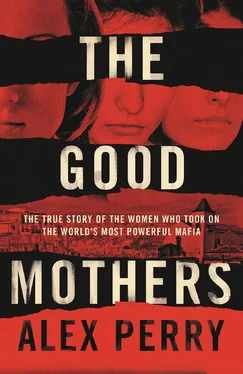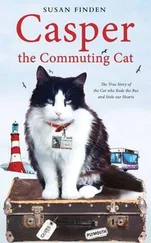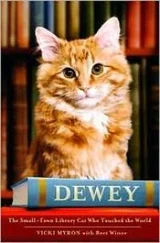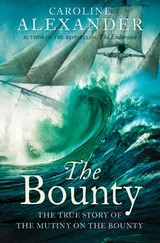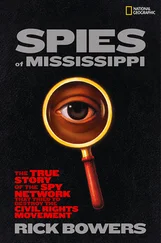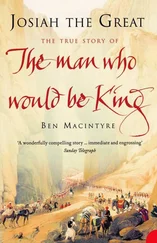In the end, Knox and her boyfriend were acquitted on appeal, twice, and the prosecutors castigated by Italy’s Supreme Court for presenting a case with ‘stunning flaws’. But at the time of Lea’s disappearance, Knox was days from being found guilty for the first time and Mignini’s version of events – that an unmarried American woman who had slept with seven men was just the kind of fiendish deviant to have sex slaves murder her roommate – was the accepted truth.
Alessandra didn’t lecture her colleagues on female emancipation. In their own lives they were free to hold whatever views they wished and she wasn’t about to let any of them think she was asking for special treatment. But when it came to cracking the omertà that cloaked Europe’s biggest mafia, Alessandra argued that the state had pragmatic reasons to care about the prejudice of gangsters. The ’Ndrangheta was as near perfect a criminal organisation as any of them would ever encounter. It had been around for a century and a half, employed thousands around the world and made tens of billions a year. It was not only the single biggest obstacle standing in the way of Italy finally becoming a modern, united nation, but also a diabolical perversion of the Italian family, which was the heart and essence of the nation. And yet until a few years earlier, the Italian state had been barely aware of its existence. When she arrived in Reggio Calabria, no one at the Palace of Justice could give Alessandra more than rough estimates of how many men the ’Ndrangheta employed or where it operated or even, to the nearest $50 billion a year, how much money it made. The kind of free will and independence that Lea Garofalo represented, and the murderous chauvinism rained down on her as a result, represented one of the few times the ’Ndrangheta had ever broken cover. At a time when prosecutors where just beginning to understand ‘how big the ’Ndrangheta had become and how much we had underestimated it,’ said Cerreti, Lea’s evidence against Carlo Cosco was also one of the prosecutors’ first ever peeks inside the organisation. The ’Ndrangheta’s violent bigotry wasn’t just a tragedy, said Alessandra. It was a grand flaw. With the right kind of nurturing, it might become an existential crisis. ‘Freeing their women,’ said Alessandra, ‘is the way to bring down the ’Ndrangheta.’
Alessandra Cerreti was born on 29 April 1968 in the eastern Sicilian port of Messina. 1In twenty-two years away, she’d only rarely visited her home town. Now she was living in Reggio Calabria, Messina’s sister city, three miles across the water, and rarely out of sight of it. She realised she’d never noticed how Messina changed through the day. At dawn, a pink light would lift its piazzas, boulevards and palm trees out of a purple gloom. At midday, the sun painted the scene in primary colours: blue sea, red roofs, yellow hills, and the white cone of Mount Etna to the south. Sunset was a languid affair, as the wind slackened and Messina sank back into the dusk under clouds edged with orange filigree. Night ushered in a Mediterranean glamour, a fathomless black set off by a necklace of white lights strung like pearls along the coast road.
It was a scene that had drawn artists and writers for generations. Those raised beside the Straits of Messina, however, have long understood that the truth of the place is in what lies beneath. The Straits are a narrow, plunging abyss formed when Africa and Europe collided fifty million years ago and Africa bent down towards the centre of the earth. In this underwater chasm, the rushing currents created when the Ionian and Tyrrhenian seas meet make for some of the most disturbed waters in all the oceans. Boiling whirlpools and sucking vortexes trap yachts and fishing boats. Slewing tides send ferries and freighters skidding sideways towards the rocks. Those peering into the depths can see startled bug-eyed fish, and even sharks and whales, shot to the surface from the sea floor 250 metres below. The swirling winds of the Straits reflect this turmoil, inverting the normal pattern of hot air over cold to create an optical illusion called the Fata Morgana in which boats and land on the horizon appear to float upside down in the sky.
On land, human history has mirrored this natural upheaval. Reggio and Messina were founded by Greek colonists whose king, Italos, eventually gave the country its name. But for three millennia, the Straits have been continuously conquered and appropriated, first by Syracusans in 387 BC, then by Campanians, Romans, Vandals, Lombards, Goths, Byzantines, Arabs, Normans, Hohenstaufen German kings, Angevins, Aragonese, Spanish Habsburgs (twice), Ottomans, Barbary pirates, reactionary French Bourbons and Bonapartists, before finally, in 1860 and 1861, Reggio and Messina were captured by Giuseppe Garibaldi in the war that unified Italy. The wealth of its occupiers had given Messina and Reggio their ancient, yellow-stone harbours, their Arabic street names and an early artistry that found exquisite expression in the Riacce Bronzes, two sculptures of naked, bearded warriors dating from 450 BC discovered by a snorkeller off the Calabrian coast in 1972. But this early globalism also had its costs. It was through the Straits’ ports that the Black Death entered Europe from Asia in 1346, going on to wipe out two-thirds of the continent’s population. In 1743, by which time humanity’s numbers had barely recovered, plague returned a second time, killing 48,000 in Messina alone. Next to those disasters, the deadly earthquakes of 1783 and 1894 were largely forgotten, though not the quake and ensuing twelve-metre tsunami of 28 December 1908 which flattened both Reggio and Messina, killing 200,000 people. Rebuilt entirely, the twin cities were levelled again by Allied bombers in 1943.
Assailed by tempests, consumed by catastrophe, the people of the Straits could be forgiven for thinking they were cursed. Many used magic and folk wisdom to account for their suffering. In the Odyssey , Homer had written about two sea monsters which lived on opposing sides of the Straits. Surging out from Calabria, the six-headed Scylla would snatch sailors from the decks of their ships, while from Sicily Charybdis would suck entire boats under the waves with her insatiable thirst. People explained Etna’s deadly eruptions by describing the mountain as the home of Vulcan, or sometimes of Cyclops, both of them angry, thundering types with low opinions of mortals. The tremors people felt under their feet were said to be the shifting grip of Colapesce, the son of a fisherman who took a deep dive one day, saw that Sicily was held up by a single, crumbling column and stayed in the depths to prevent its collapse. The floating islands which appeared over Reggio, meanwhile, were thought to be glimpses of Avalon, to which the fairy-witch Morgan le Fay (after whom the Fata Morgana was named) spirited a dying King Arthur. Up there too, it was said, was The Flying Dutchman , a ghost ship doomed to sail the oceans for ever.
Alessandra would carry the feel of the Straits with her all her life. It was there in the way a winter’s chill would remind her of the morning breeze off the city docks or how the first days of summer would almost instantly change her forearms from alabaster to honey. It was there, too, in her distaste for the way people often seemed to prefer fiction over truth. While most children were delighted to find themselves growing up in a world of gods and castles in the sky, Alessandra was unmoved. Stories of monsters and fairies were entertaining, but they also obscured the deadly reality of the Straits. Every summer, she watched as Messina’s coastguards heaved a steady procession of dripping, blanketed stretchers onto the docks. How could these regrettable, preventable deaths be part of some mystical grand plan? There was little logic, either, in the other spurious legends that Sicilians would spin to glorify their island. In 1975, when Alessandra was five, a twenty-six-year-old from Messina called Giovanni Fiannacca swam to Calabria in 30 minutes and 50 seconds, a record that was to stand for forty years. Alessandra’s neighbours proclaimed Fiannacca the greatest distance swimmer in Sicily, perhaps even of all time. The reality, as most Siciliens knew, was that he had timed his crossing to coincide with a particularly strong east–west tide which would have carried a rubber duck to Calabria.
Читать дальше
